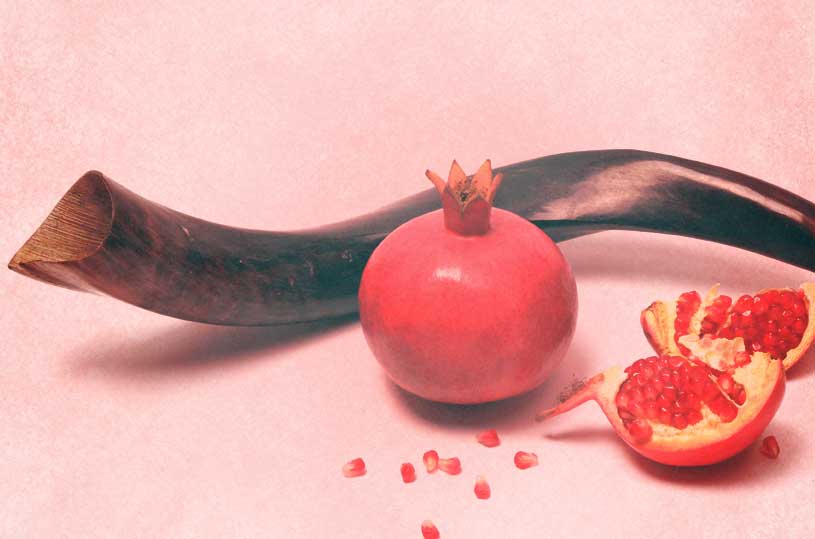
- When we recite Kiddush we make three brachos – בורא פרי הגפן, מקדש ישראל ויום הזכרון and שהחיינו. Women who already said שהחיינו at candle-lighting should not say the brachah again at Kiddush.
- At the beginning of the meal, after washing and eating some bread we make a בורא פרי העץ and eat some apple dipped in honey and say a Tefillah for a sweet new year. Next we eat the Simanim, following Chazal’s teaching that a Siman at the start of the year has the ability to create a path for the entire year. Many also have the custom to eat a piece of either a fish head or a sheep’s head. (It is recommended to save the pomegranates until the second day of Rosh Hashana in order to be able to make the שהחיינו on them.)
Shofar
- It is a mitzvah to hear the shofar on both days of Rosh Hashana – on the first day it is a Torah mitzvah and on the second a rabbinic obligation.
- Every person is required to hear a minimum of thirty blasts. Our custom is to hear thirty initial blasts before Mussaf, and then to add another set for each of זכרונות מלכויות and שופרות, completing a total of 100 blasts at the end of Mussaf. (One should also remember to bring a towel to shul in order to have something to separate one’s face from the floor when one bows during Aleinu.)
Yom Tov
- It is forbidden to prepare for the second day of Yom Tov on the first day. Therefore one may not wash dishes, or prepare candles (or floaters with wicks) for the second night. Further, one may not cook or heat up food for Yom Tov Sheni (even though one may do so for the sake of Shabbos when one has an Eruv Tavshilin.) One may only begin the preparations for the second day of Yom Tov after nightfall (צאת הכוכבים), which is at 19:19 this year.
- One may not light a new fire on Yom Tov Sheni – instead one must transfer a flame from the slow-burning candle (mentioned above) in order to light.
- On the second night of Yom Tov women should say two brachos again: להדליק נר של יום טוב and שהחיינו , and it is recommended that they place a new garment or a new fruit (such as the pomegranate mentioned above) near the candles and have intention to make שהחיינו on them too. If she has no new garment or fruit she should nevertheless make the שהחיינו. A man who makes Kiddush should also preferably wear a new garment or have a new fruit in mind, but, again, if he has neither of these he should still make a שהחיינו.
